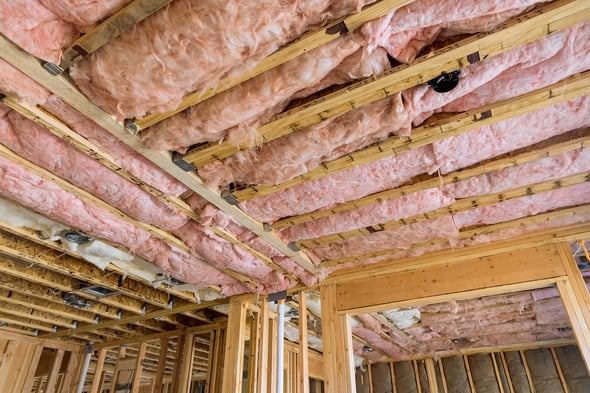According to the Department of Energy, 50-70% of an average home’s total energy bill goes toward heating and cooling. Therefore, proper home insulation can minimize your energy bills by about 20%. Here are six fascinating home insulation facts.

1. Insulation Is Cost-Effective
According to the EPA, the average American family spends about $2,000 annually on energy bills. Therefore, investing in quality insulation is the single most effective approach to reducing utility costs.
Effective home insulation materials will provide a barrier against the elements, ensuring it maintains a consistent temperature inside, no matter the season. A poorly insulated home can waste up to 60% of its heating and cooling potential through its attics and walls.
2. Insulation Reduces Carbon Dioxide
The leading energy consumers in the US include buildings at 40% of all energy, followed by industries (32%), and transportation (28%). Since using energy releases carbon dioxide into the air, that makes buildings among the worst CO2 emissions offenders.
Insulation effectively lowers the amount of energy your HVAC system needs to run, hence minimizing your building’s carbon footprint. The less frequently you use the heating system, the less CO2 the building releases.
3. R-Value Is a Measure of Insulation Efficiency
The building’s heat resistance measurement is one of the most helpful insulation facts you should grasp. The R-value of any given insulating material indicates how well it resists heat exchange. Although R-values tend to increase with increasing insulation thickness, simply measuring the thickness of the insulation material won’t give you the R-value.
4. Insulation Has Other Purposes Apart from Preventing Air Leakages
Typically, preventing air leakage is the first thing that comes to mind when discussing insulation. It is essential to have a comfortable living environment year-round. Air leaks are the primary cause of up to 40% of wasted heating and cooling energy, and insulation prevents these leaks.
Although insulation’s primary purpose is to keep the heat in during the winter and maintain cool temperatures during the summer, it also has other benefits, such as preventing insect and pest infestations. If your building is in a flood-prone area, insulate your home with a material that can withstand moisture.
5. Air Seal Before Insulation
While there are numerous potential sources of air leakage in a home, it is vital to pay special attention to the areas where you will place the new insulation.
Before attic insulation, seal all holes and gaps because of their huge potential for leaks. Caulk the spaces within the dropped soffits and the areas where the knee walls meet. Install flashing around the chimneys and use high-temperature silicone caulk to seal the joint between the chimney and the flashing.
6. Insulation Does Not Stop Heat Flow
One of the great things about insulation is that it will continuously work regardless of the material used. Rather than eliminating the amount of energy lost, insulation only slows down the rate of heat flow, preventing unnecessary energy loss.
Thankfully, insulation will remain in place for the duration of the insulated building’s existence as long as nothing damages it. Insulation is a constant effort to reduce energy costs and maintain a comfortable indoor environment.
Choose First Quality Professional Home Insulation Services
Learning insulation facts is essential, so you make solid decisions when insulating your building. If you’re unsure which home insulation material to pick, don’t hesitate to reach out to First Quality Roofing.
We are Las Vegas’s premier roofing contractor, handling both commercial and residential properties. Contact us today to schedule a free, no-risk evaluation of your home’s insulation needs.
















